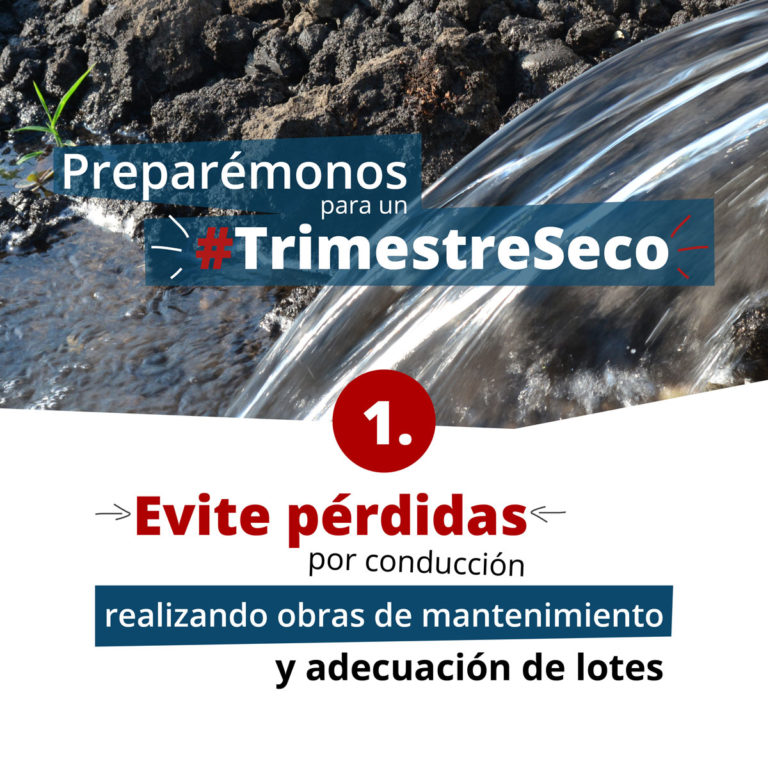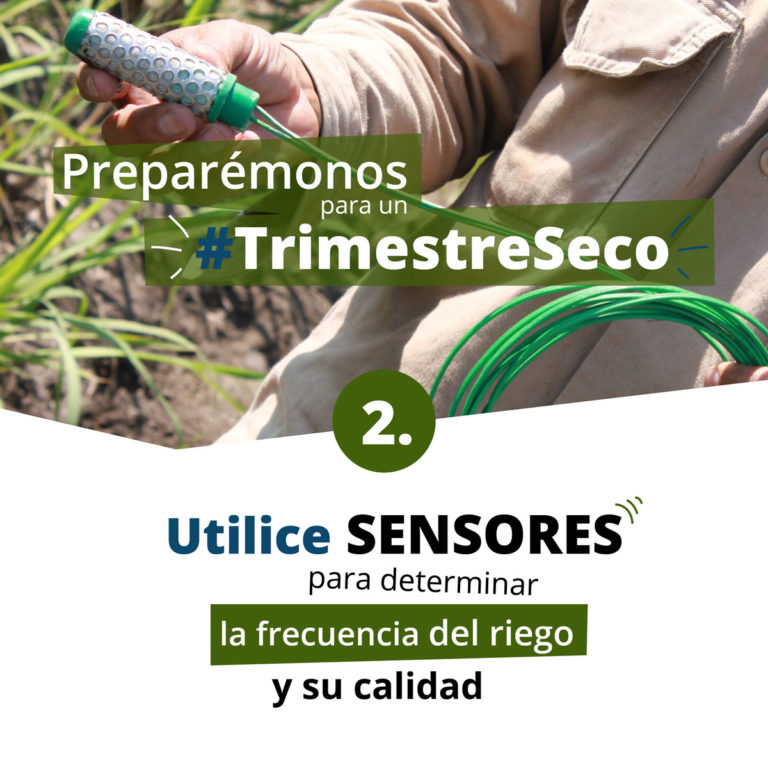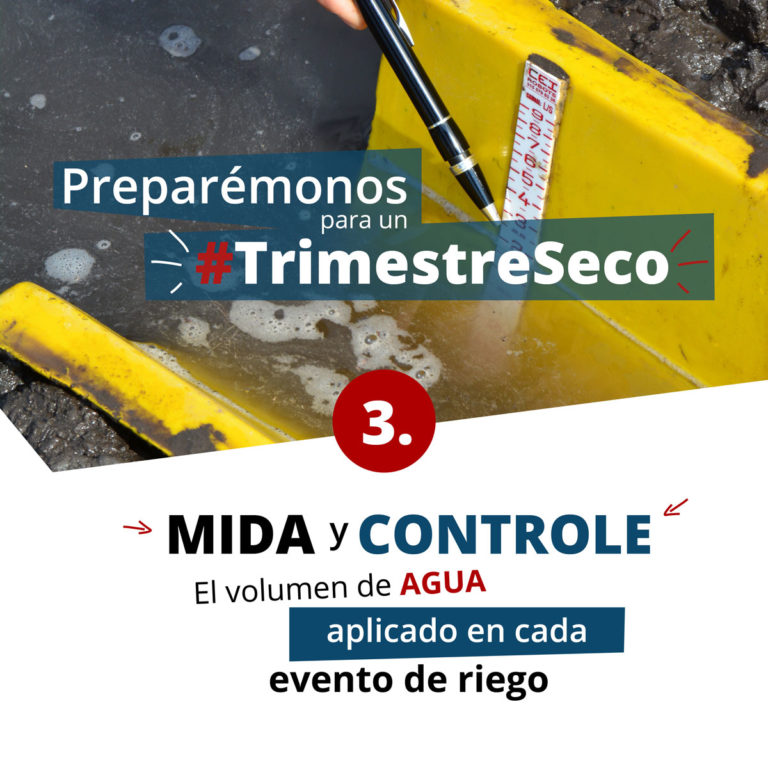In about eighty percent of the land dedicated to sugarcane in the Cauca River Valley, furrow irrigation is used. For the agronomic management of crops with this system in periods of water deficit Cenicaña makes some recommendations.
- Agree shifts to capture surface water with the other users of the basin, through the user associations of the rivers.
- Repair water leaks in the pipes.
- Conform and seal the flanges of the irrigation ditches.
- Use the 4.0 version Water Balance program to prioritize irrigation by age and cutoff number.
- Prioritize irrigation by textural soil family:
- Guide the water in the grooves and remove the obstacles (large lumps, stones, weeds).
- Plug the grooves at the end to avoid water waste. If surpluses occur, direct them to other lots that require irrigation.
- Incorporate cachaza and compost in sandy or stony areas.
- According to the entresurcos with two ditches in the base, in order to improve the progress of the water and bring the water to the roots of the crop
- If you do not have enough water to water germination, avoid renewing plantations.
- In times of drought, avoid deep breaking work. Perform scarification. Only in cases of absolute water shortage do you post mechanized work as far as possible.
- Monitor harvesting equipment traffic to prevent trampling of strains.
- Use crop residues to conserve moisture in the soil. Ship only on the regrowth.
- In socas, perform the first irrigation at 2.5 months of age, trying to match the fertilization.
- In socas with bellows to the 4 × 1 place the water in two of the four streets without waste and alternate in time. The potential water savings is 60%. In socas with bellows to the 2 × 1 place the water in one of the two streets without waste and alternate in time. The potential water savings is 66%.
- Measure the partial water advance times along the groove and increase or decrease the flow rate per groove according to the suggested times:
- Move the granulated fertilization until the soil has adequate humidity (for example, after a rain of more than 20 mm). If you are going to make late fertilizations, use high clearance tractors.
- Potassium is key to the crop in case of a possible water deficit. Verify if you perform proper fertilization with this element using soil analysis.
- In cases of absolute water shortage reduce the doses of nitrogen application. Higher doses will not protect the crop.
- For nitrogen fertilization, preferably use UAN solution or ammonium nitrate, which are sources of immediate availability for the plant.
WATER MEASUREMENT FOR IRRIGATION
- Measure the flow of water that is used in irrigation both in luck and in the sources (deep wells and bocatomas).
- Determine the volume applied in luck using the administrative control of irrigation and compare with the reference values, like this:
- Gravity irrigation:
Irrigation of germination or fertilization: <800 m3/he has
Rising irrigation:
<1000 m3/ ha (2 - 4 months)
<1200 m3/ ha (4 - 10 months)
- Germination or fertilization irrigation:
Watering up to 2 months old: 300 - 500 m3/he has
Irrigation from 2 months of age: 500 - 700 m3/he has
ADDITIONAL INFORMATION
- Irrigation alternatives according to soil types
- Recommendations for the cultivation of sugarcane in the Cauca river valley in the face of the El Niño phenomenon (Full document)




HFS Post Views: 1.540












